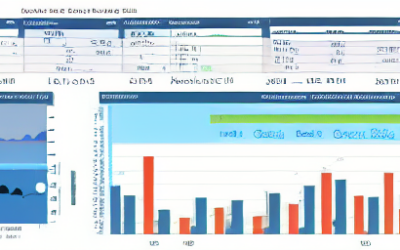High availability IT (HA IT) is a system design approach and associated service implementation that ensures a pre-defined level of operational performance will be met during a contractual measurement period. HA IT is typically used to describe the ability of an IT system to remain operational for a period of time without interruption. This is especially important for systems that are mission-critical and must remain active for long periods of time.
Tech Blog
Tech Insights, Information, and InspirationOrder Management Systems (OMS)
Order management systems (OMS) are software solutions that are used to manage the entire order process from order entry to fulfillment and invoicing. These systems are designed to automate, streamline, and organize the entire order process. They can be used to manage customer orders, track inventory, process invoices, and generate reports.
ClassifyAnything Add-on for Excel
ClassifyAnything add-on for Excel helps to quickly organize data by grouping it into categories. This helps to make the data easier to analyze and interpret.
Big Data Analytics
Big Data Analytics is the process of analyzing large sets of data to uncover patterns and trends. It is a form of advanced analytics that helps organizations analyze vast amounts of data to make better decisions, understand customer behavior, identify new opportunities, and optimize operations. Big Data Analytics involves the use of a variety of tools and techniques to analyze large datasets, such as machine learning and predictive analytics.
Business Intelligence Implementation
Business intelligence (BI) implementation requires organizations to consider a variety of factors. Companies must consider the types of data sources they need to access, the type of analysis they need to perform, and the tools and techniques used to analyze the data. Additionally, organizations must have the right people in place to implement the system and ensure the data is properly managed and interpreted.
Database vs Data Warehouse
A database and data warehouse are both used to store and manage large amounts of data, but they serve different purposes. A database is designed to store transactional data that is used for day-to-day operations. A data warehouse is designed to store historical data that is used for analysis and reporting.
EHR and EMR Software
Electronic Health Records (EHR) and Electronic Medical Records (EMR) are both types of software used to store and manage patient medical records. EHRs contain a patient’s medical history, diagnosis, treatment, and more, while EMRs are typically used to store patient visits, treatments, and follow-up care. Both systems are designed to allow for secure access to records by both the patient and healthcare providers. Additionally, EHRs and EMRs both provide the ability to integrate with other systems, such as billing software.
QMS Software
QMS software stands for Quality Management System software. It is a software system that helps organizations manage their quality processes and procedures. Quality management systems are designed to help organizations meet customer requirements and improve operational efficiency.
ECM Software
ECM (Enterprise Content Management) software is a type of software used to capture, store, manage, and deliver content across an organization. This content can include documents, images, videos, and other forms of digital information. ECM software provides a secure platform for storing and sharing important content, as well as tools for managing and controlling access to information.
The Stages of Data Analytics
Data analytics is the practice of collecting, cleaning, organizing, and analyzing large sets of data to identify meaningful patterns and trends. The goal of data analytics is to bring insights to business processes and operations, helping organizations make smarter decisions and achieve better outcomes. Data analytics can be used to drive customer segmentation, marketing campaigns, product innovation, and more.
Get In Touch
UseTech Design, LLC
TROY, MI • BLOOMFIELD HILLS, MI
Call or text +1(734) 367-4100










